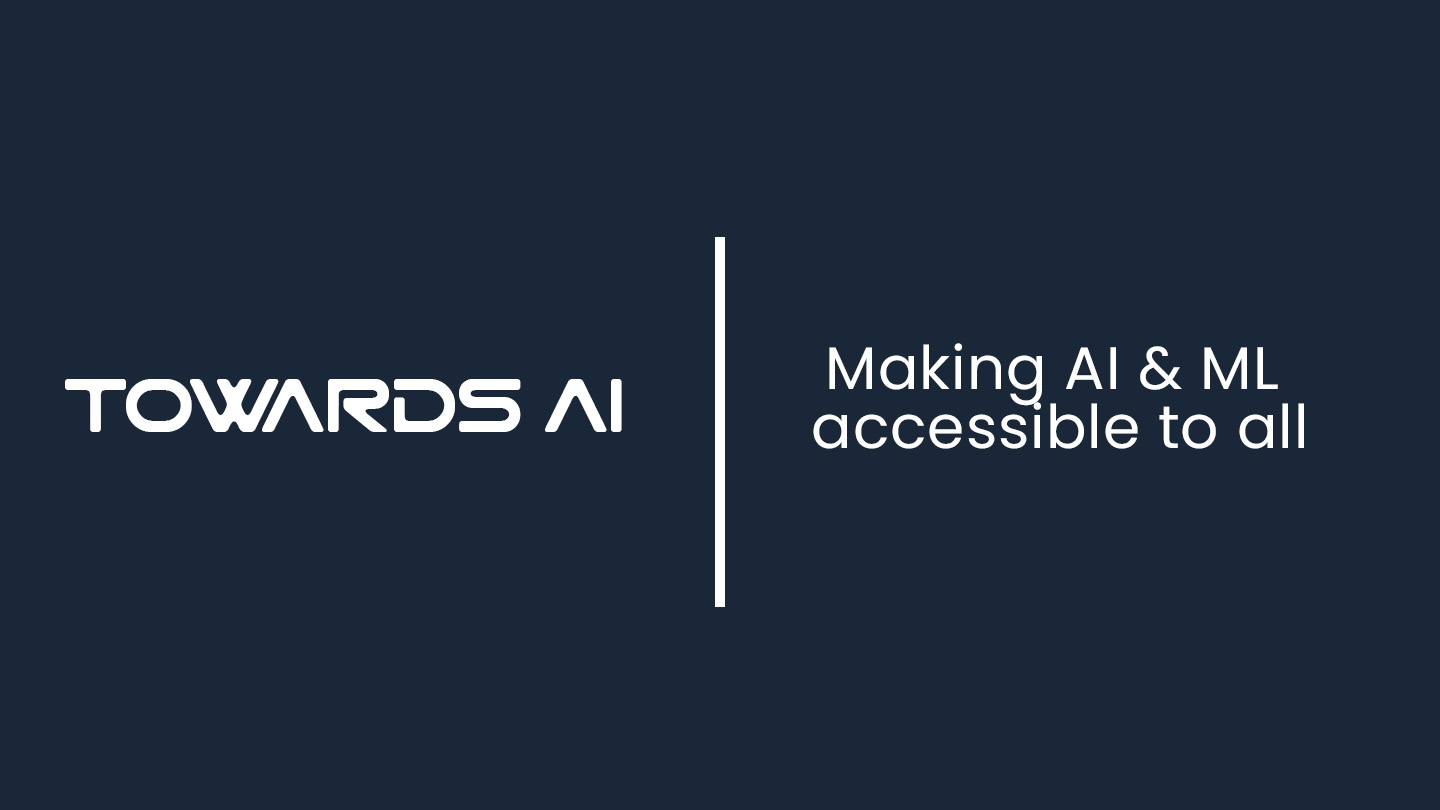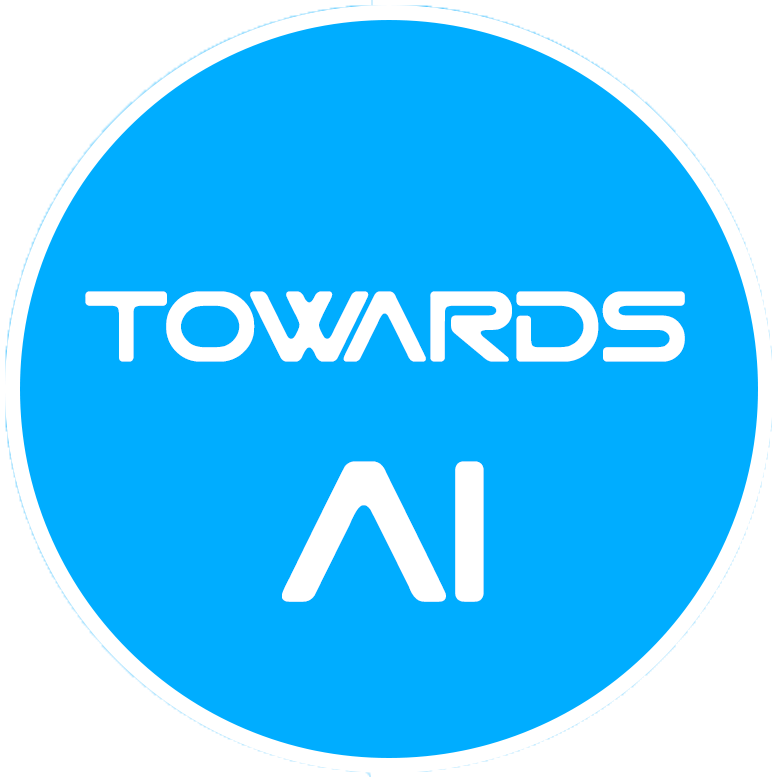
AI Agent Developer: A Journey Through Code, Creativity, and Curiosity
Last Updated on February 19, 2025 by Editorial Team
Author(s): Talha Nazar
Originally published on Towards AI.
Artificial Intelligence (AI) agents are no longer just science fiction — they’re transforming industries, automating mundane tasks, and solving complex problems that were once thought impossible. From virtual assistants like Siri to autonomous robots in warehouses, AI agents have become indispensable. But how does one become an expert in developing these intelligent systems?
This story will take you on a realistic journey through the life of Alex, an aspiring AI agent developer. Following Alex’s footsteps, you’ll learn everything from foundational concepts to advanced techniques, complete with practical examples, visualizations, and links to resources. Let’s dive in.
Laying the Foundation — Understanding What an AI Agent Is
What is an AI Agent?
An AI agent is a system capable of perceiving its environment, making decisions, and taking actions to achieve specific goals. Unlike traditional software programs, AI agents use machine learning models to adapt their behavior based on data.
Key Components of an AI Agent
- Perception: Sensors or input mechanisms to gather information about the environment.
- Decision-Making: Algorithms to process inputs and decide on actions.
- Action Execution: Mechanisms to interact with the environment.
- Learning: Ability to improve performance over time using feedback loops.
Example: Imagine building a chatbot that answers customer queries. It perceives user input (text), decides on a response using natural language processing (NLP), executes the action (sending the reply), and learns from past interactions to enhance future responses.
Graphical Visualization
+-------------------+
| Environment |
+-------------------+
|
v
+-------------------+
| Perception |
+-------------------+
|
v
+-------------------+
| Decision-Making |
+-------------------+
|
v
+-------------------+
| Action Execution |
+-------------------+
|
v
+-------------------+
| Learning |
+-------------------+
Building Blocks of AI Agents
To create robust AI agents, we need to understand several key technologies:
1. Machine Learning Basics
Machine learning (ML) enables AI agents to learn patterns from data without explicit programming. There are three main types:
- Supervised Learning: Training a model with labeled data.
- Unsupervised Learning: Finding hidden structures in unlabeled data.
- Reinforcement Learning: Teaching an agent to make sequential decisions through rewards and penalties.
Practical Example: Suppose you want your AI agent to classify emails as “spam” or “not spam.” You’d use supervised learning with labeled email datasets.
Email Spam Classifier Using Scikit-Learn
from sklearn.feature_extraction.text import CountVectorizer
from sklearn.model_selection import train_test_split
from sklearn.naive_bayes import MultinomialNB
# Sample dataset
emails = ["Win money now!", "Meeting scheduled", "Free lottery tickets"]
labels = [1, 0, 1] # 1 = Spam, 0 = Not Spam
# Convert text into numerical features
vectorizer = CountVectorizer()
X = vectorizer.fit_transform(emails)
# Split data into training and testing sets
X_train, X_test, y_train, y_test = train_test_split(X, labels, test_size=0.2, random_state=42)
# Train a Naive Bayes classifier
model = MultinomialNB()
model.fit(X_train, y_train)
# Evaluate the model
accuracy = model.score(X_test, y_test)
print(f"Accuracy: {accuracy}")
Explanation:
CountVectorizerconverts text into numerical vectors.MultinomialNBis a probabilistic model suitable for text classification.- We evaluate the model’s accuracy on unseen data.
2. Natural Language Processing (NLP)
NLP allows AI agents to understand and generate human language. Libraries like NLTK, SpaCy, and Hugging Face Transformers simplify NLP tasks.
Practical Example: Creating a sentiment analysis tool to determine whether a review is positive or negative.
Sentiment Analysis Using Hugging Face Transformers
from transformers import pipeline
# Load pre-trained sentiment analysis pipeline
sentiment_pipeline = pipeline("sentiment-analysis")
# Analyze sentiment of a sample text
result = sentiment_pipeline("I love this product!")
print(result)
Output:
[{'label': 'POSITIVE', 'score': 0.9987}]
Explanation:
- The
pipelinefunction loads a pre-trained model fine-tuned for sentiment analysis. - This approach leverages transfer learning, where a general-purpose model is adapted for specific tasks.
3. Reinforcement Learning (RL)
RL is ideal for scenarios requiring decision-making under uncertainty, such as game-playing agents or autonomous vehicles.
Setting Up Your Development Environment
To become an AI agent developer, you need the right tools. Here’s how to set up your development environment:
Step 1: Install Python
Python is the most popular programming language for AI development due to its simplicity and extensive libraries. Download it from python.org and install it on your machine.
Step 2: Install Essential Libraries
You’ll need several libraries to build AI agents. Use pip to install them:
pip install numpy pandas matplotlib scikit-learn tensorflow keras gym
- NumPy: For numerical computations.
- Pandas: For data manipulation.
- Matplotlib: For data visualization.
- Scikit-Learn: For machine learning algorithms.
- TensorFlow/Keras: For deep learning models.
- Gym: For reinforcement learning environments.
Step 3: Choose an IDE
Integrated Development Environments (IDEs) like VS Code, PyCharm, or Jupyter Notebook make coding easier. I recommend starting with Jupyter Notebook for its interactive nature.
Building Your First AI Agent
Let’s build a simple AI agent using Reinforcement Learning (RL). RL is a type of machine learning where an agent learns to perform tasks by interacting with an environment and receiving rewards or penalties.
Example 1: CartPole Problem
The CartPole problem is a classic RL task where the goal is to balance a pole on a moving cart. We’ll use the OpenAI Gym library to simulate this environment.
Step 1: Import Libraries
import gym
import numpy as np
from collections import deque
import matplotlib.pyplot as plt
Step 2: Initialize the Environment
env = gym.make('CartPole-v1')
state_size = env.observation_space.shape[0]
action_size = env.action_space.n
print(f"State Size: {state_size}, Action Size: {action_size}")
Here, state_size represents the number of variables describing the environment (e.g., cart position, velocity), and action_size represents the possible actions (e.g., move left or right).
Step 3: Define the Agent
We’ll create a simple Q-learning agent. Q-learning is a model-free RL algorithm that learns the value of actions in each state.
class QLearningAgent:
def __init__(self, state_size, action_size):
self.state_size = state_size
self.action_size = action_size
self.q_table = np.zeros((state_size, action_size))
self.learning_rate = 0.1
self.discount_factor = 0.95
self.epsilon = 1.0 # Exploration rate
def choose_action(self, state):
if np.random.rand() <= self.epsilon:
return env.action_space.sample() # Explore
return np.argmax(self.q_table[state]) # Exploit
def learn(self, state, action, reward, next_state):
old_value = self.q_table[state, action]
next_max = np.max(self.q_table[next_state])
new_value = (1 - self.learning_rate) * old_value + self.learning_rate * (reward + self.discount_factor * next_max)
self.q_table[state, action] = new_value
Step 4: Train the Agent
agent = QLearningAgent(state_size, action_size)
episodes = 1000
scores = deque(maxlen=100)
for episode in range(episodes):
state = env.reset()
total_reward = 0
done = False
while not done:
action = agent.choose_action(state)
next_state, reward, done, _ = env.step(action)
agent.learn(state, action, reward, next_state)
state = next_state
total_reward += reward
scores.append(total_reward)
avg_score = np.mean(scores)
if episode % 100 == 0:
print(f"Episode: {episode}, Average Score: {avg_score}")
Step 5: Visualize Results
plt.plot(scores)
plt.xlabel("Episode")
plt.ylabel("Score")
plt.title("Training Progress")
plt.show()
Example 2: Tic-Tac-Toe RL Agent
import gym
import numpy as np
# Create a custom Tic-Tac-Toe environment
class TicTacToeEnv(gym.Env):
def __init__(self):
self.board = np.zeros((3, 3))
self.action_space = gym.spaces.Discrete(9)
self.observation_space = gym.spaces.Box(low=-1, high=1, shape=(3, 3))
def step(self, action):
row, col = divmod(action, 3)
if self.board[row][col] != 0:
return self.board.flatten(), -10, False, {} # Penalize invalid moves
self.board[row][col] = 1
done = self.check_winner() or np.all(self.board != 0)
reward = 1 if done else 0
return self.board.flatten(), reward, done, {}
def reset(self):
self.board = np.zeros((3, 3))
return self.board.flatten()
def check_winner(self):
# Check rows, columns, diagonals for a winner
pass
env = TicTacToeEnv()
state = env.reset()
for _ in range(100):
action = env.action_space.sample() # Random action
state, reward, done, info = env.step(action)
if done:
print("Game Over")
break
Explanation:
- The
gym.Envclass defines the environment dynamics. - The agent interacts with the environment
step()and receives rewards/penalties.
Advanced Techniques for AI Agent Development
1. Multi-Agent Systems
In some applications, multiple AI agents collaborate or compete. For instance, self-driving cars must coordinate with other vehicles.
2. Explainability and Debugging
As AI agents grow more complex, ensuring transparency becomes crucial. Tools like SHAP and LIME help interpret model predictions.
3. Transfer Learning
Leverage pre-trained models to solve similar problems faster. For instance, use a pre-trained vision model for object detection in autonomous vehicles.
Practical Applications and Career Pathways
AI agents have countless real-world applications:
- Healthcare: Diagnosing diseases using medical imaging.
- Finance: Algorithmic trading and fraud detection.
- Entertainment: Game-playing agents like AlphaGo.
To succeed as an AI agent developer, focus on:
- Continuous Learning: Stay updated with research papers and online courses.
- Portfolio Building: Develop projects and share them on GitHub.
- Networking: Join AI communities and attend conferences.
Conclusion: Your Path Forward
By mastering the concepts outlined above — machine learning, NLP, reinforcement learning, multi-agent systems, and explainability — you can develop cutting-edge AI agents. Remember, becoming an expert requires continuous learning and experimentation.
Next Steps:
- Explore Kaggle Competitions for hands-on practice.
- Join communities like Reddit’s r/MachineLearning for discussions.
- Contribute to open-source projects on GitHub.
Citations and References
- Goodfellow, I., Bengio, Y., & Courville, A. (2016). Deep Learning. MIT Press.
- Sutton, R. S., & Barto, A. G. (2018). Reinforcement Learning: An Introduction. MIT Press.
- Hugging Face. (n.d.). Retrieved from https://huggingface.co/
Thank you for taking the time to read this! If you found it insightful, clap, comment, and share it with others who might benefit. This was a basic introduction, but in my next story, I’ll dive deeper into the details — stay tuned!
Join thousands of data leaders on the AI newsletter. Join over 80,000 subscribers and keep up to date with the latest developments in AI. From research to projects and ideas. If you are building an AI startup, an AI-related product, or a service, we invite you to consider becoming a sponsor.
Published via Towards AI













